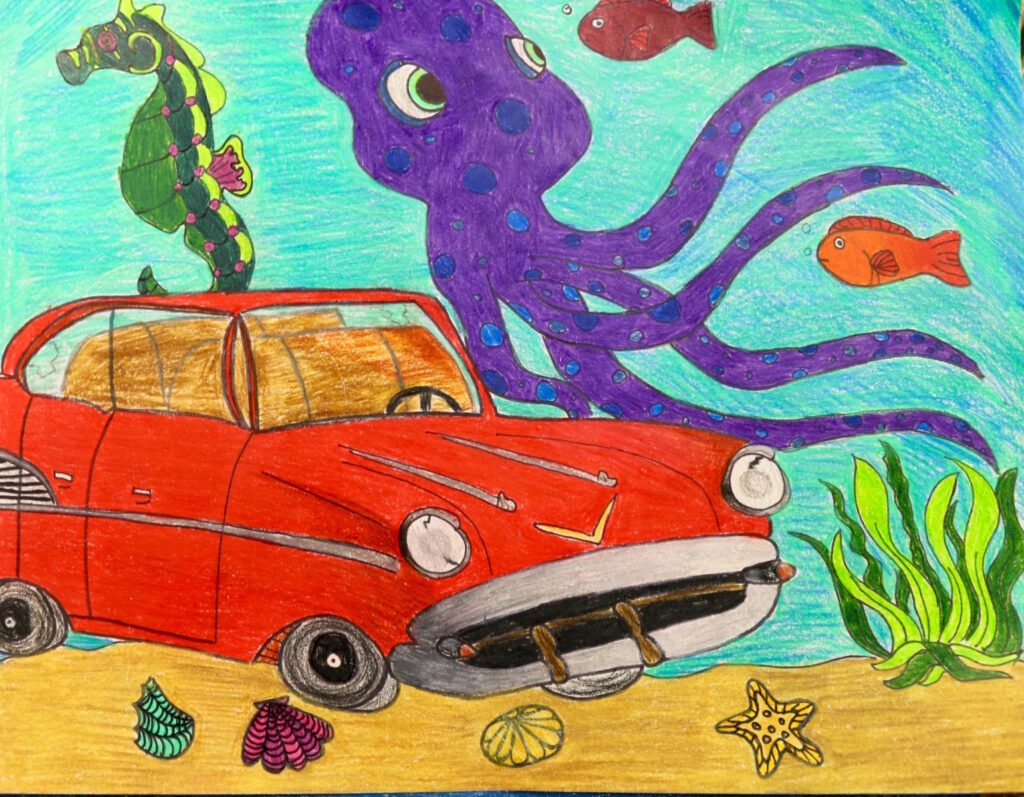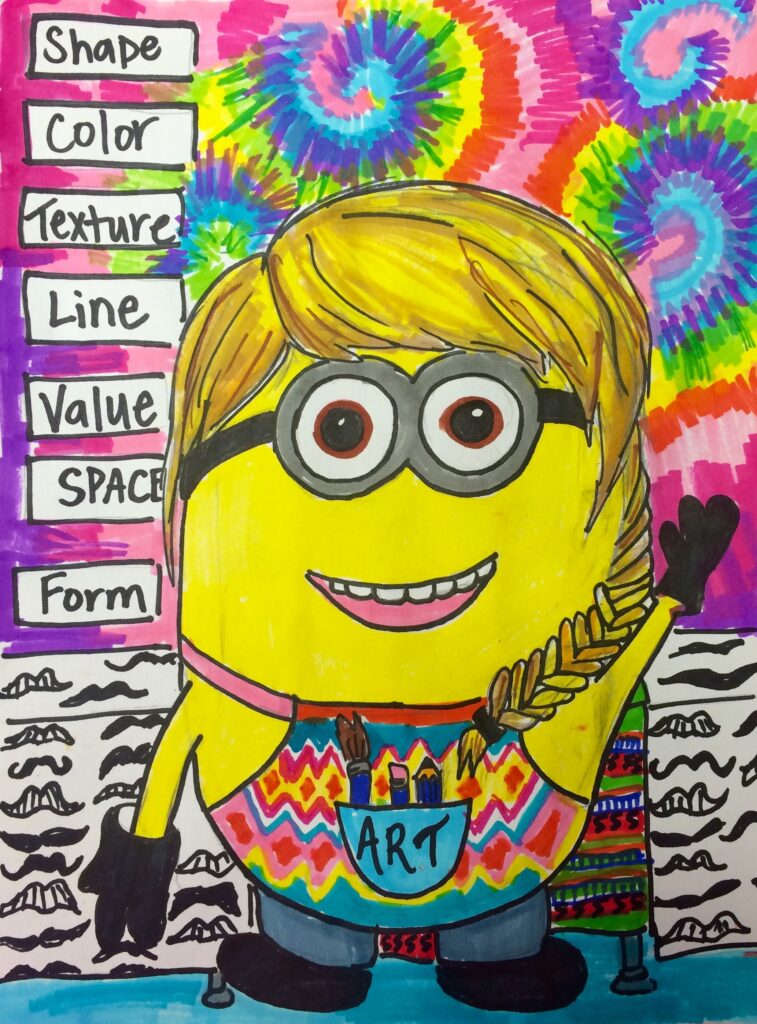An 8th-grade student walks into a classroom and sits down at a desk. With a freshly-sharpened pencil, the student is preparing to take the state writing assessment. As part of this assessment, the student will be expected to complete a descriptive essay in 90 minutes. This is the writing prompt: “Describe one activity you enjoy.” If you’ve ever had a conversation with an 8th-grader, you know they’d be able to sum their answer up in one sentence! Yet, they are expected to compile a detailed, descriptive essay about a vague topic.
So what does art have to do with state writing assessments? Well, we often teach our students that art tells a story and contains meaning. Art can be viewed as its own visual language. Sometimes a student just needs a really good idea to have something worthwhile to write about. Art can be that good idea to inspire writing!
Today I am going to share 6 art projects that incorporate writing and turn your students’ imagery into a written story.
1. Bleezer’s Ice Cream

This project is inspired by Jack Prelutsky’s poem “Bleezer’s Ice Cream.” Share the poem with your students and give them the task of inventing their own ice cream flavors. To throw in a twist, have your students create flavors only using alliterations. Take the project even further by having students visualize and depict their flavors. Your students will have so much fun inventing wacky flavors they’ll probably forget they were even writing!
2. Smashing Faces

This AOE Lesson Plan takes a traditional concept, the self-portrait, and turns it into an entirely new idea. Creating self-portraits just got fun again! After finishing their drawings, have students write narratives about them. Why are their faces smashed? What are they looking at? What’s happening? Did they just witness an extraordinary event? The creativity to answer these prompts will be sure to flow right off the page!
3. Emotional Weaving

To start this project have your students select an emotion. Then, using the 5 senses, challenge your students to create a written description of that emotion. For example, what does anger look like? What does it feel like? What noises would you associate with anger?
Students will then use their written descriptions as a jumping off point for a piece of art as they depict their emotion through the use of color and line. Finally, students will use that piece of art to create a paper weaving. To take the project even further, you might want to try weaving together two different emotions!
4. Abandoned Cars

One of the key components to successful writing is a starting with a solid theme. Giving students a theme of “an abandoned car” provides a great starting point for a creative visual story. When finished, or even as they work, encourage your students to write a story based on experience or fiction that describes their drawing.
5. Blackout Poetry

Challenge your students to see written words as an art form. Blackout poetry focuses on rearranging words to create a different meaning. This project will force your students to think critically as they search for anchor words that create a powerful story. Encourage the use of imagery and color to bring more meaning to the message.
6. Fan Fiction

It’s no question that students of all ages are fascinated with the characters from movies and television. Allow your students to create a project based on one of their favorite characters. Whether it’s a LEGO, Minion, or superhero, expose your students to the fan fiction writing style. As students work, have them write about their pieces. You may even want to suggest that they write a sequel to their favorite movie or book.
Writing and art can be used together to strengthen each other. Making it a practice to incorporate writing alongside art lessons will only benefit your students. If you’re new to incorporating writing in your art room, start simply. Try out one of the ideas presented here to get started!
What are your favorite projects that incorporate writing?
How often do your students write in your art room?
Magazine articles and podcasts are opinions of professional education contributors and do not necessarily represent the position of the Art of Education University (AOEU) or its academic offerings. Contributors use terms in the way they are most often talked about in the scope of their educational experiences.





